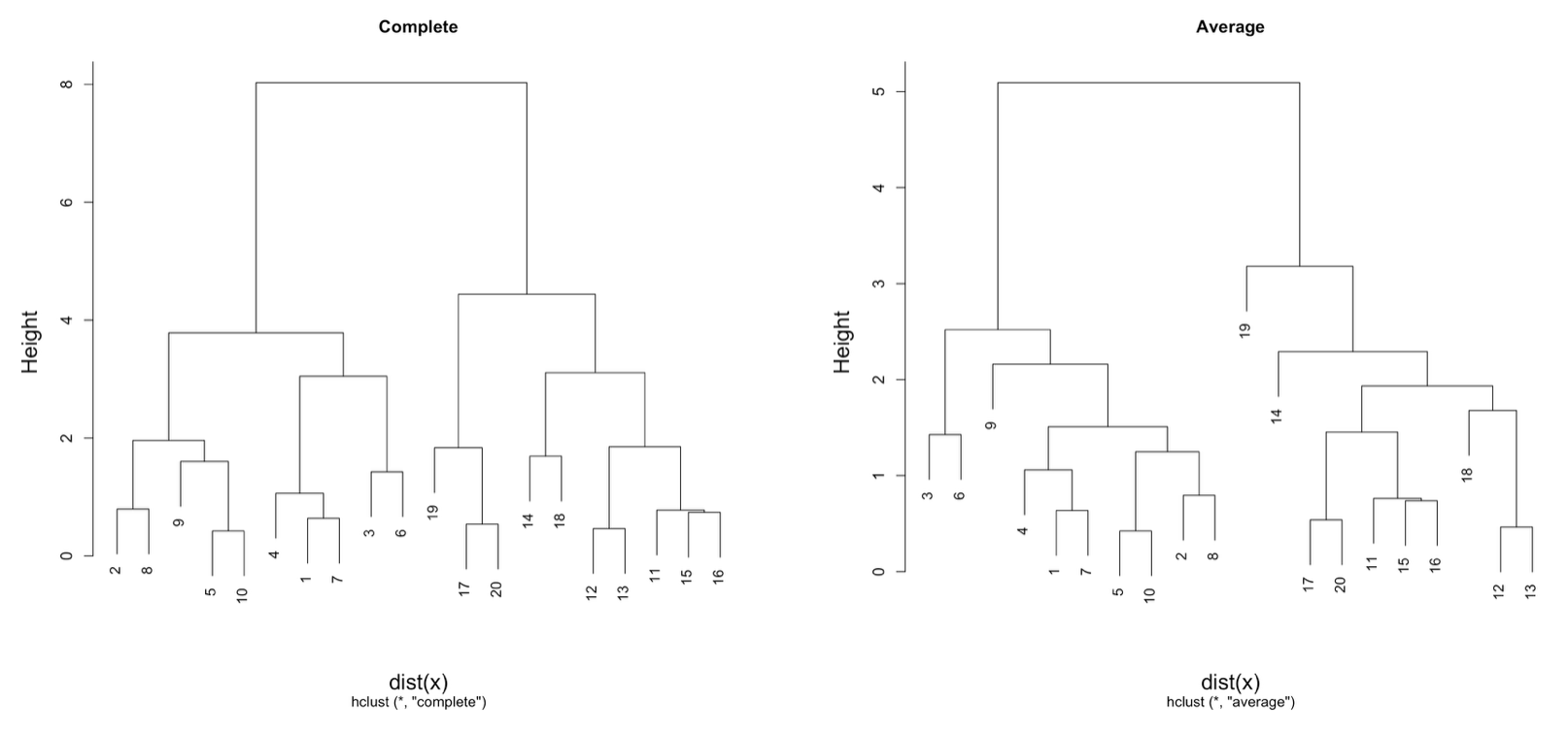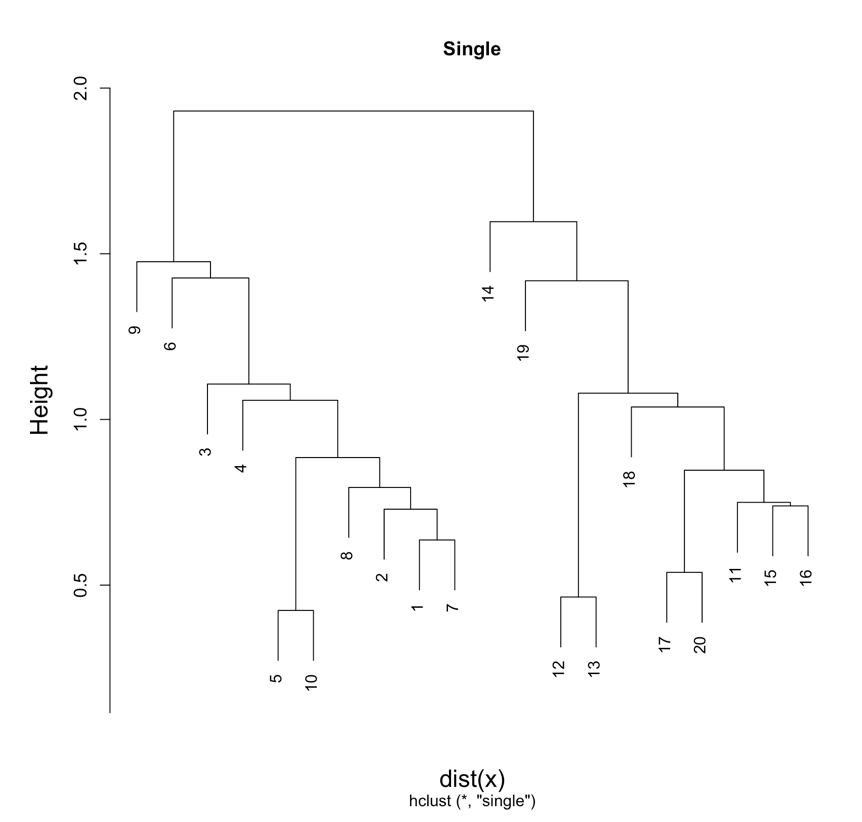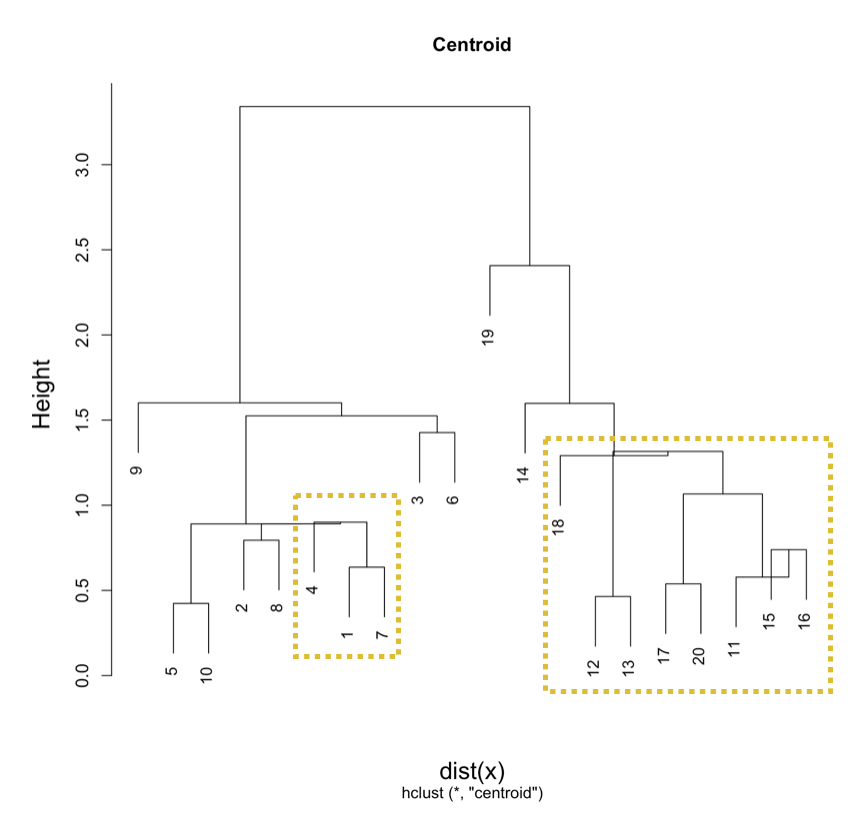Clustering linkage and practical matters
Unsupervised Learning in R

Hank Roark
Senior Data Scientist at Boeing
Linking clusters in hierarchical clustering
- How is distance between clusters determined? Rules?
- Four methods to determine which cluster should be linked
- Complete: pairwise similarity between all observations in cluster 1 and cluster 2, and uses largest of similarities
- Single: same as above but uses smallest of similarities
- Average: same as above but uses average of similarities
- Centroid: finds centroid of cluster 1 and centroid of cluster 2, and uses similarity between two centroids
Linking methods: complete and average

Linking method: single

Linking method: centroid

Linkage in R
# Fitting hierarchical clustering models using different methods
hclust.complete <- hclust(d, method = "complete")
hclust.average <- hclust(d, method = "average")
hclust.single <- hclust(d, method = "single")
Practical matters
- Data on different scales can cause undesirable results in clustering methods
- Solution is to scale data so that features have same mean and standard deviation
- Subtract mean of a feature from all observations
- Divide each feature by the standard deviation of the feature
- Normalized features have a mean of zero and a standard deviation of one
Practical matters
# Check if scaling is necessary
colMeans(x)
-0.1337828 0.0594019
apply(x, 2, sd)
1.974376 2.112357
Practical matters
# Produce new matrix with columns of mean of 0 and sd of 1
scaled_x <- scale(x)
colMeans(scaled_x)
2.775558e-17 3.330669e-17
apply(scaled_x, 2, sd)
1 1
Let's practice!
Unsupervised Learning in R

